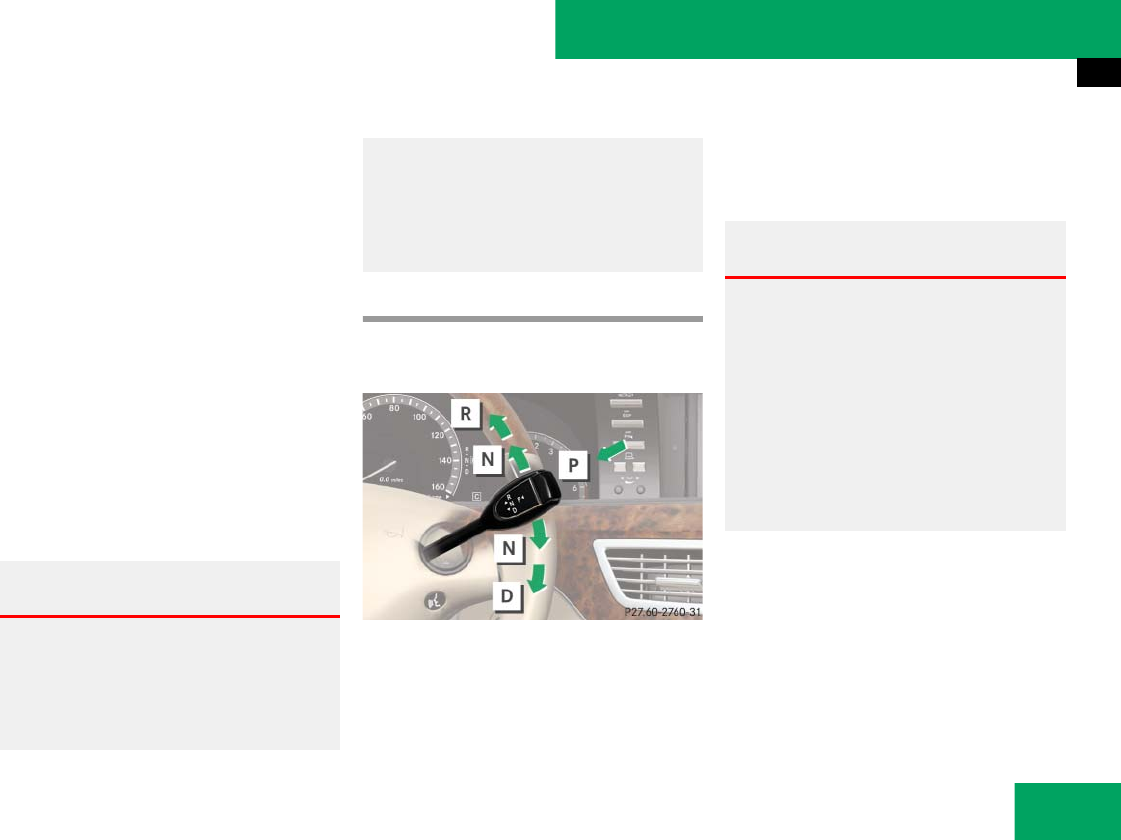
367
Controls in detail
Automatic transmission
̄ Automatic transmission
For more information on driving with an
automatic transmission, see “Automatic
transmission” (
୴ page 359).
Your vehicle’s automatic transmission
adapts its gear shifting process to your in-
dividual driving style by continually adjust-
ing the shift points up or down. These shift
point adjustments are performed based on
current operating and driving conditions.
If the operating conditions change, the
automatic transmission reacts by
adjusting its shift program.
Gear selector lever
The gear selector lever is located on the
right of the steering column.
Gearshift pattern for automatic
transmission
P Park position
R Reverse gear
N Neutral
D Drive position
i
During the brief warm-up, automatic trans-
mission upshifting is delayed. This allows the
catalytic converter to heat up more quickly to op-
erating temperature.
Warning! G
Make sure that absolutely no objects are
obstructing the pedals’ range of movement.
Keep the driver’s footwell clear of all obsta-
cles. If there are any floormats or carpets in
the footwell, make sure that the pedals still
have sufficient clearance.
During sudden driving or braking maneuvers
the objects could get caught between the
pedals. You could then no longer brake or
accelerate.
i
The current automatic transmission
position P, R, N or D appears in the tachometer
display (
୴ page 370).
Warning! G
It is dangerous to shift the automatic trans-
mission out of park position P or neutral
position N if the engine speed is higher than
idle speed. If your foot is not firmly on the
brake pedal, the vehicle could accelerate
quickly forward or reverse. You could lose
control of the vehicle and hit someone or
something. Only shift into gear when the
engine is idling normally and when your right
foot is firmly on the brake pedal.


















